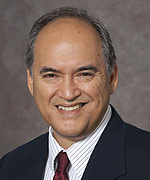
Archived Event
The Alliance Advancement Series
Presented on: Tuesday, March 09, 2021
With the number of pediatric patients on the transplant waitlist rising, there is a critical need to expand the donor pool. As a result, Donation after Circulatory Determination of Death (DCDD) has become a focus within the donation-transplantation community as a means of accomplishing just that. In this webinar, we will highlight effective practices for facilitating DCDD cases with potential pediatric donors. Additionally, we will hear from two transplant centers as they share their experiences with kidney utilization, liver transplantation, and waitlist mortality in pediatrics.
- Identify challenges of waitlisting children and describe the need for an expanded donor pool.
- Recognize the complications and outcomes associated with DCDD and pediatric liver disease.
- Summarize special considerations in utilizing kidneys from small pediatric DCDD donors.
- Recall transplant outcomes of recipients from pediatric DCDD kidney donors.
- Describe the OPO and donor hospital roles in the DCDD process.
- Outline the differences between a DCDD case with an adult donor vs. a pediatric donor.
Members of the donation and transplantation community serving diverse populations to include administrators, coordinators, physicians, nurses, surgeons, managers, quality improvement specialists, social workers, and other donation and transplantation center professionals and their colleagues.
Continuing Education Credits
Continuing Education credits are no longer available for this learning opportunity.










